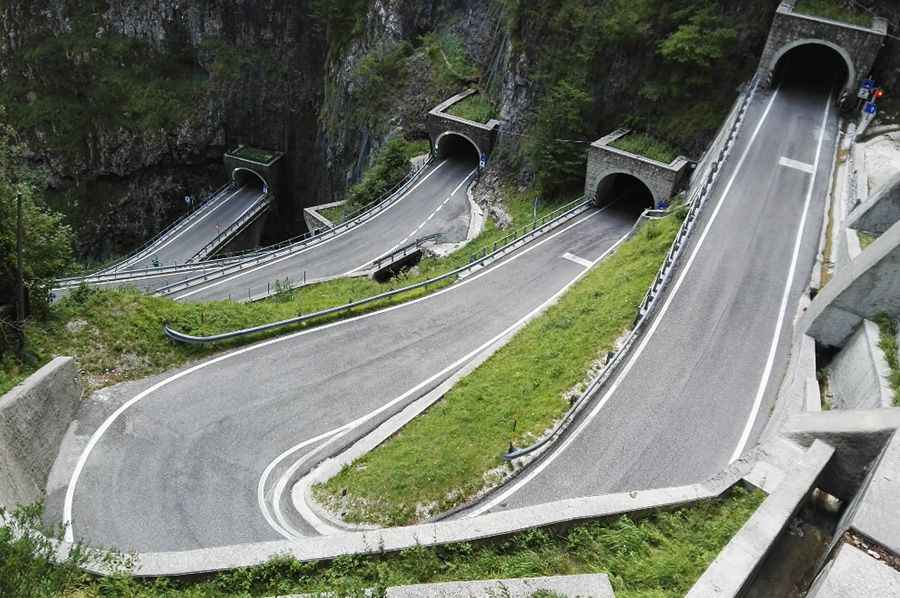San Boldo Pass is a military road with 18 hairpin turns and 5 tunnels
Passo di San Boldo is a mountain pass at an elevation of 712m (2,335ft) above sea level, located in the province of Treviso, in Italy. The road to the summit is an engineering masterpiece with 18 hairpin turns and 6 tunnels. It’s one of the famous hairpinned roads in the world.

Where is San Boldo Pass?
The pass is located in the Veneto region, in the northeastern part of the country, at the southern edge of the Italian Alps.
Is the road to San Boldo Pass paved?
The road to the summit is totally paved. It’s called Strada Provinciale 635 (SP 635). The road is popular around the world due to a short 1km-long section, comprising 5 tunnels blasted into the rock, 8 numbered hairpin turns, and 6 bridges.
How long is San Boldo Pass?
The pass is 11.6km (7.20 miles) long, running south-north from Tovena to Sant'Antonio Tortal.
When was the road to San Boldo Pass built?
The road is a feat of engineering and determination and has a long history. This road has always had considerable historic importance, dating back to Roman times. It replaced a steep path leading up to the summit that existed since the nineteenth century, but only during the First World War did the project succeed. Between February and June 1918, the Austro-Hungarian army managed to build the road in less than three months. After this fact, the road got the nickname "road of 100 days." 1400 people, including prisoners of war, women, children, and the elderly in the area, worked day and night to complete the strategic route for refueling during the Battle of Piave. Despite the topographical conditions, the slope could not exceed 12% for the passage of heavy vehicles and artillery. The works began in 1914 under the direction of engineer Giuseppe Carpenè.
Is San Boldo Pass challenging?
The road is brutally steep in parts, with a maximum gradient of 37% through some of the ramps, featuring 18 hairpin turns. It allows traffic in only one direction, alternating with traffic lights. There is a speed limit of 30 km/h (19 mph) and a height limit of 3.2 m (10.5 ft) after buses were repeatedly stuck in the tunnels.
How did the pass get its name?
Despite the fact that the road is located in Italy, it’s named after a Spanish hermit called Boldo. He was a hermit living in these mountains, and some years later, he would become a saint, San Boldo. It was formerly known as Passo Sant'Ubaldo.
Pic: Solitario Motero